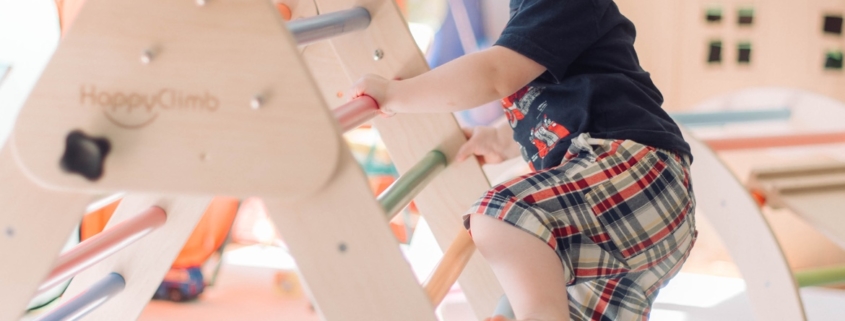Self-Regulation: Why is it important and how do I help my child achieve it?
Self-regulation for toddlers and children is defined as the ability to manage their behaviors and emotions appropriately. As children grow and develop, self-regulation becomes increasingly more important; some examples of self-regulation behaviors that are expected of school-aged children is waiting their turn, sharing, keeping their hands to themselves during group activities, and regulating their emotions when something doesn’t go their way. So, how do we help our children achieve this skill, and how do we help them work on it during the toddler years? The answer is not as intimidating as you think – there are many simple (and fun!) activities you can do with your child throughout the day to help them develop their self-regulation skills, and I will give you several examples.
Before I jump into giving you examples, please hear this – any and all expectations for toddlers to exhibit self-regulation should be thrown right out the window. To put it into perspective for you, children don’t even begin to develop impulse control until age three; however, that does not mean you can’t begin engaging your child in activities to help them attain this skill very early on! Be patient with them and remember that the goal is not for them to actually display self-regulation or impulse control, it’s simply for them to play with you in a way that helps them get closer to achieving self-regulation and impulse control. Let’s also be real about the fact that tantrums are inevitable with toddlers, and they’re a very normal part of child development. In addition to self-regulation games and activities, I will provide you with some simple calm-down techniques that you can begin teaching your child when they are having a meltdown; they might not actually engage in the technique, but modeling the techniques for them is beneficial in many ways. With all that being said, let’s jump right into some fun ways you can work on self-regulation at home!
Simple Board Games
Board games are an awesome way to work on self-regulation skills, mainly because they require children to wait their turn. Keep board games very simple and age appropriate, or your kiddo may become frustrated. Some of my favorite games are:
- Feed the Woozle
- Lucky Ducks
- Monkey Around
- Daniel Tiger’s Welcome to Mainstreet Game
- Duck, Duck, Dance
- Panda’s Picnic in the Park
- ThinkFun Roll and Play
- Where’s Bear?
Classic Games
Classic games that we all know and love are awesome for practicing self-regulation with your toddlers. The best part is that you need little to no materials for these games – you can play them whenever, wherever! Some of my favorites are:
- Freeze Dance!
- Have your child dance while music is playing, and freeze when the music stops.
- Red Light, Green Light
- Your child moves when you say green light, and stops when you say red light.
- Follow the Leader
- Have your child copy simple moves such as stomping, clapping, twisting, and jumping.
- Animal movements
- Model animal movements such as a bear walk, crab walk, starfish jump, and galloping horse for your child. Call out the movements and do them together.
- Popcorn kernels
- Kneel down with your child and count to ten – once you get to ten, you pop up like a popcorn kernel! Keep it fun and interesting by changing the number that you count to
- Hide and Seek
- Designate a safe space to play hide and seek with your child – the act of hiding and waiting for someone to find them is an awesome way to practice self-regulation
Calm-Down Techniques
- Belly breaths
- Teach your child to put their hands on their belly and breathe deeply
- Identify their feelings
- When your child is having a meltdown, talk to them about it and encourage them to identify their feelings. Prompt them by saying, “I can see you’re frustrated (or mad, or sad, or scared, etc.), and I’m sorry you feel that way. You can tell me that you’re feeling frustrated.”
- Sing or count
- When your child is feeling impatient or frustrated, model singing or counting as a way for them to calm themselves down
- Stretch
- Encourage your child to stand up and stretch when they are feeling uncomfortable emotions
Now that you’ve been given some helpful tools for practicing self-regulation at home, don’t wait to get started! The earlier you begin practicing these skills, the better; just remember to let go of any expectations, and be flexible. Enjoy!



